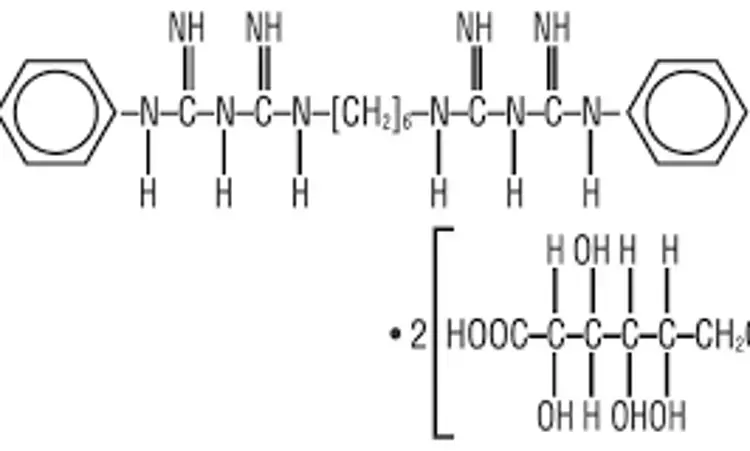- Home
- Medical news & Guidelines
- Anesthesiology
- Cardiology and CTVS
- Critical Care
- Dentistry
- Dermatology
- Diabetes and Endocrinology
- ENT
- Gastroenterology
- Medicine
- Nephrology
- Neurology
- Obstretics-Gynaecology
- Oncology
- Ophthalmology
- Orthopaedics
- Pediatrics-Neonatology
- Psychiatry
- Pulmonology
- Radiology
- Surgery
- Urology
- Laboratory Medicine
- Diet
- Nursing
- Paramedical
- Physiotherapy
- Health news
- Fact Check
- Bone Health Fact Check
- Brain Health Fact Check
- Cancer Related Fact Check
- Child Care Fact Check
- Dental and oral health fact check
- Diabetes and metabolic health fact check
- Diet and Nutrition Fact Check
- Eye and ENT Care Fact Check
- Fitness fact check
- Gut health fact check
- Heart health fact check
- Kidney health fact check
- Medical education fact check
- Men's health fact check
- Respiratory fact check
- Skin and hair care fact check
- Vaccine and Immunization fact check
- Women's health fact check
- AYUSH
- State News
- Andaman and Nicobar Islands
- Andhra Pradesh
- Arunachal Pradesh
- Assam
- Bihar
- Chandigarh
- Chattisgarh
- Dadra and Nagar Haveli
- Daman and Diu
- Delhi
- Goa
- Gujarat
- Haryana
- Himachal Pradesh
- Jammu & Kashmir
- Jharkhand
- Karnataka
- Kerala
- Ladakh
- Lakshadweep
- Madhya Pradesh
- Maharashtra
- Manipur
- Meghalaya
- Mizoram
- Nagaland
- Odisha
- Puducherry
- Punjab
- Rajasthan
- Sikkim
- Tamil Nadu
- Telangana
- Tripura
- Uttar Pradesh
- Uttrakhand
- West Bengal
- Medical Education
- Industry
Chlorhexidine enhances remineralization effect of high viscosity glass ionomer cement in caries

Chlorhexidine gluconate enhances the remineralization effect of high viscosity glass ionomer cement on dentin carious lesions, according to a recent study published in the BMC Oral Health.
A study was conducted to compare the mean mineral density (MMD) and examine the remineralization of carious dentin after cavity disinfection with chlorhexidine gluconate (CHX) and restoration with high viscosity glass ionomer cement (H-GIC) in vitro.
Selective caries removal to leathery dentin was performed in 40 extracted primary molars. The samples were scanned using micro-computed tomography (micro-CT) to determine the MMD baseline and randomly divided into 4 groups (n = 10): Equia™ group, applied dentin conditioner and restored with H-GIC (Equia Forte™), CHX-Equia™ group, disinfected the cavity with 2% CHX before applying dentin conditioner and restored with H-GIC (Equia Forte™), Ketac™ group, restored with H-GIC (Ketac Universal™) and CHX-Ketac™ group, disinfected the cavity with 2% CHX before restored with H-GIC (Ketac Universal™). The samples underwent micro-CT scanning post-restoration and post-pH-cycling to determine their respective MMDs. One sample from each group was randomly selected to analyze by scanning electron microscopy (SEM).
Results of the study are:
The MMD gain in the 4 groups post-restoration was significantly different between the Equia™ and CHX-Ketac™ groups (one-way ANOVA with Post hoc (Tukey) test, P = 0.045). There was a significant difference in MMD gain post-restoration between the Equia™ and CHX-Equia™ groups (Independent t-test, P = 0.046). However, the Ketac™ and CHX-Ketac™ groups' MMD were similar. The SEM images revealed that the CHX-Ketac™ group had the smallest dentinal tubule orifices and the thickest intertubular dentin among the groups. However, the CHX-Equia™ group had thicker intertubular dentin than the Equia™ group.
Thus, applying 2% CHX on demineralized dentin enhances the remineralization of the dentin beneath the restoration.
Reference:
Chlorhexidine gluconate enhances the remineralization effect of high viscosity glass ionomer cement on dentin carious lesions in vitro by Patcharanun Borompiyasawat, et al. published in the BMC Oral Health.
https://bmcoralhealth.biomedcentral.com/articles/10.1186/s12903-022-02098-
Dr. Shravani Dali has completed her BDS from Pravara institute of medical sciences, loni. Following which she extensively worked in the healthcare sector for 2+ years. She has been actively involved in writing blogs in field of health and wellness. Currently she is pursuing her Masters of public health-health administration from Tata institute of social sciences. She can be contacted at editorial@medicaldialogues.in.
Dr Kamal Kant Kohli-MBBS, DTCD- a chest specialist with more than 30 years of practice and a flair for writing clinical articles, Dr Kamal Kant Kohli joined Medical Dialogues as a Chief Editor of Medical News. Besides writing articles, as an editor, he proofreads and verifies all the medical content published on Medical Dialogues including those coming from journals, studies,medical conferences,guidelines etc. Email: drkohli@medicaldialogues.in. Contact no. 011-43720751


